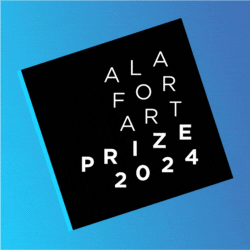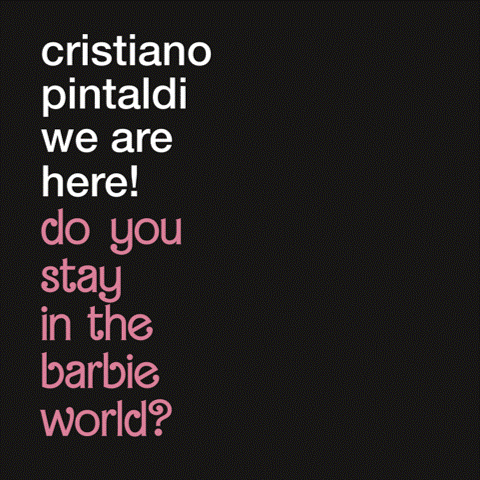
English version below
Mutina for Art dedica ogni anno un premio all’arte contemporanea, sostenendo progetti inediti di artisti internazionali. Nell’edizione 2021 di This Is Not a Prize, la vincitrice scelta è Shirana Shahbazi, artista visiva e fotografa. Al centro della sua ricerca il confine, inteso come “simultaneità”, e la combinazione di media e immaginari. L’artista ha risposto alle nostre domande per approfondire la sua pratica artistica e la sua ricerca.
Veronica Pillon: Sei nata a Tehran ma la Germania è il tuo paese d’adozione, il luogo in cui hai studiato e ti sei formata come artista. Che significato ha, per te, il termine “confine” e che importanza ha nella tua pratica artistica?
Shirana Shahbazi: Sono cresciuta in Germania con un passaporto Iraniano. L’Europa e i paesi occidentali mi hanno insegnato molto bene cosa significhi la parola confine. Solamente trentenne ho ricevuto la cittadinanza europea, cosa che mi ha permesso di pormi dal lato privilegiato delle persone che considerano “confine” solo una parola astratta. La cruda verità è che le nazioni con le frontiere più rigidi sono case per le persone che possono muoversi più liberamente. Non posso legare il mio lavoro con la parola “confine” in tutto e per tutto, quanto piuttosto con il suo contrario: l’idea di simultaneità di differenti realtà e significati.
VP: Sei un’artista visiva e spesso combini vari media e discipline. Il tuo punto di partenza è però la fotografia analogica. Perché preferisci questa “vecchia” tecnica in un mondo dominato dal digitale?
SS: La fotografia analogica è il medium in cui sono specializzata. Sono ancora molto interessata alla riduzione dei parametri nella stampa, cosa che aiuta a essere molto precisi. Mi piace la lentezza del processo. Allo stesso tempo la includo in molte forme nel mio lavoro, come anche il digitale, o vari metodi di stampa. Non è un aspetto così cruciale del mio lavoro, è più un metodo e una passione per l’aspetto “materico” del processo. Ogni strumento che si utilizza influenza il modo in cui si lavora. Amo la stampa analogica per la sua bellezza e semplicità. Preferisco analizzare i miei negativi in laboratorio che non restare seduta davanti al computer.
VP: Nella tua pratica mescoli non solo diversi media, ma anche vari soggetti e immaginari visivi. Quali sono le tue fonti?
SS: Ci sono state diverse fasi nel mio lavoro in cui non ho solo combinato vari media ma anche vari soggetti. Ho cominciato con i generi tradizionali, come la natura morta, il ritratto, le immagini di viaggio ecc. Nella giustapposizione o nella sovrapposizione continua delle immagini, queste acquisiscono complessità. Una complessità che mi piace nel momento in cui diventa la rappresentazione di ogni tipo di realtà.

This Is Not a Prize 2021 award has been assigned to artist Shirana Shahbazi (Tehran, 1974).
Shirana Shahbazi has been selected by the Mutina team, by its CEO Massimo Orsini and by the curator of Mutina for Art Sarah Cosulich, for the vast multidisciplinary territory to which her photographic research taps into. This Is Not a Prize 2021 recognizes Shahbazi’s ability to constantly rethink the image and its implications through unsettling compositional devices.
Veronica Pillon: Tehran is your birthplace, but Germany is your adopted country, where you studied and took your first steps as artist: what does the word “border” mean to you and how important is it in your artistic practice?
Shirana Shahbazi: I grew up in Germany with an Iranian Passport. Europe and there western countries taught me well, what borders mean. In my mid thirties I finally received a European Citizenship, which puts me on the side of the privileged for whom border is an abstract term. The cynical truth is, that the nations with the harshest borders are homes for the people, who can most freely move. I cannot connect my work with the word border at all but much rather with the contrary: With the idea of the simultaneity of different realities and meanings.
VP: You are a visual artist: you often combine different media and disciplines but your starting point is analog photography. Why do you prefer this “old” technique in our digital era?
SS: Analogue Photography is the medium I was trained in. I am still very much interested in the reduction of parameters while printing which helps to be very precise. I like the slowness of the process. But I also include it in many different ways of working, such as the digital, or various printing methods. It’s not a crucial aspect of my work. It’s just a method and a passion for the physical aspect of it. Also each tool that one uses influences the way we work. I admire analogue printing for it’s beauty and simpleness. And I prefer to look at my contact sheets and sit in lab, rather than in front of a computer.
VP: You match not only media but also subjects and visual imaginaries: what are your sources?
SS: There have been different phases in my work in which I have always combined not only different techniques as you mention, but also different type of images. I started with the classical genres like portraiture, landscape, still lives, travel images and so on. In their juxtapositioning or meanwhile more and more overlapping they gain a complexity that I like when it comes to the representation of any kind of reality.














